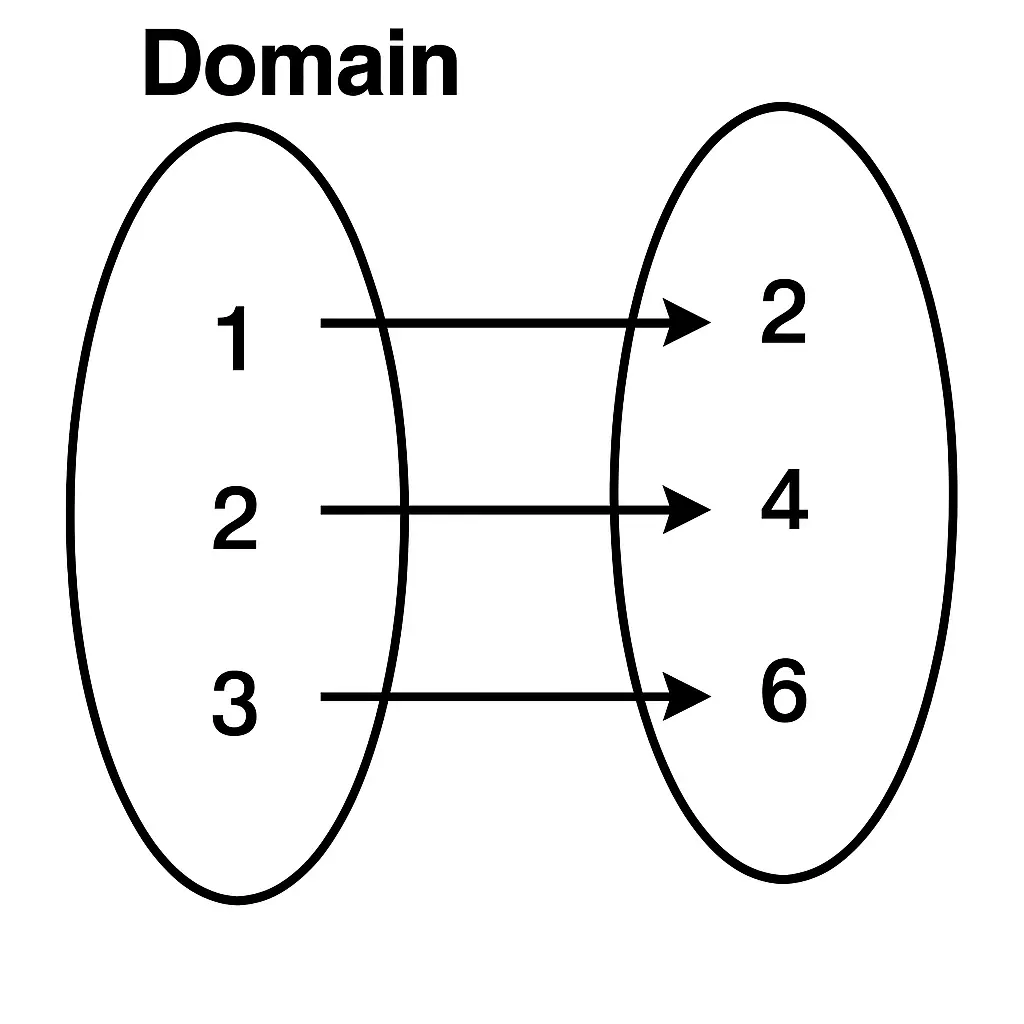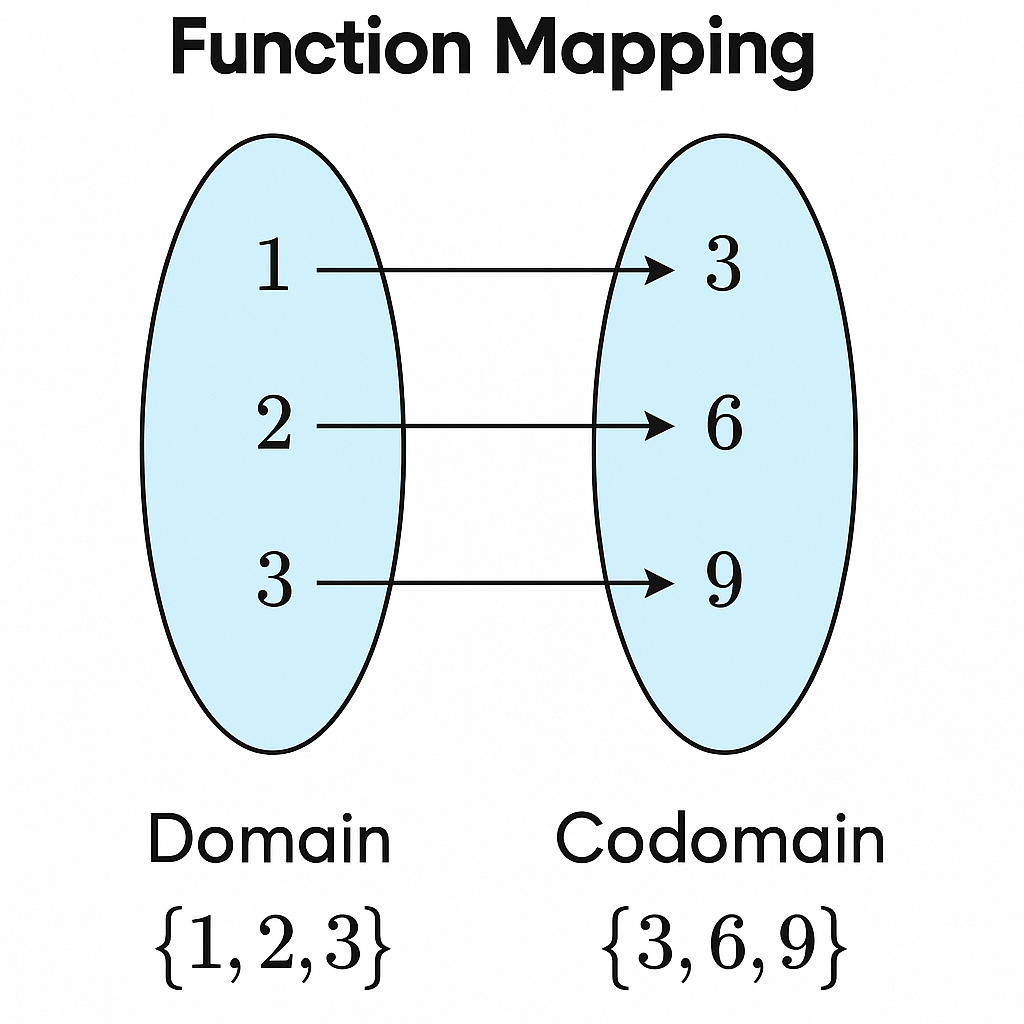Shopping cart
Hello There!
Welcome to GattPrep, your Guide for Life and Learning
Welcome! In this lesson, we explore mappings and functions. A mapping shows how each input (from one set) is connected to an output (from another set). When each input has only one output, the mapping is called a function. These ideas are essential in understanding how variables relate in mathematics. Let’s dive in!
A mapping is a way of showing a relationship between two sets. Each element in the domain (input) is connected to one or more elements in the codomain (output).
Example: A rule that says “multiply each number by 2” maps 1 to 2, 2 to 4, 3 to 6.
Mapping Table:
| Input (Domain) | Output (Codomain) |
|---|---|
| 1 | 2 |
| 2 | 4 |
| 3 | 6 |

A function is a special kind of mapping. Each input must map to exactly one output.
Example: Input → Multiply by 3
1 → 3, 2 → 6, 3 → 9 — This is a function.

Mappings can be shown in 3 main ways:
Example: Rule: Add 4 to each input
| Input (x) | Output (y) | Ordered Pair |
|---|---|---|
| 1 | 5 | (1, 5) |
| 2 | 6 | (2, 6) |
| 3 | 7 | (3, 7) |
Visual: [INSERT ARROW DIAGRAM HERE – Show mapping 1→5, 2→6, 3→7]
If one input connects to more than one output, the mapping is not a function.
Example: 2 → 5 and 2 → 8 is ❌ NOT a function.

Rule: Subtract 2
| Input (x) | Output (y) |
|---|---|
| 5 | ? |
| 8 | ? |
| 10 | ? |
Which of the following are functions?
A machine multiplies each number by 10. If you put in 1, 2, 3, what are the outputs?
Today you learned:
Why do you think functions must connect each input to just one output? What problems might happen if they didn’t?